Explore All
BROWSE BY CATEGORY
Interior
Exterior
Home Essentials
Homeowner Tools
Blogs & Guides
Find a Pro
Book Your Appointment Now
Home Essentials
About Renovize Home
Explore All
BROWSE BY CATEGORY
Interior
Exterior
Home Essentials
Homeowner Tools
Blogs & Guides
Find a Pro
Book Your Appointment Now
Home Essentials
About Renovize Home
Last Updated on October 1, 2025
Gutters are the most helpful part of your home, which keeps water away, but even small holes, leaks in the gutter can cause big damage. A gutter patch can fix minor issues or prevent big damages like foundation, roof, and wall.
Sometimes you only need to patch gutters rather than replace the whole thing, the material we use, DIY & professional, which one is best or when we call professionals, and how to prevent leaks and holes.
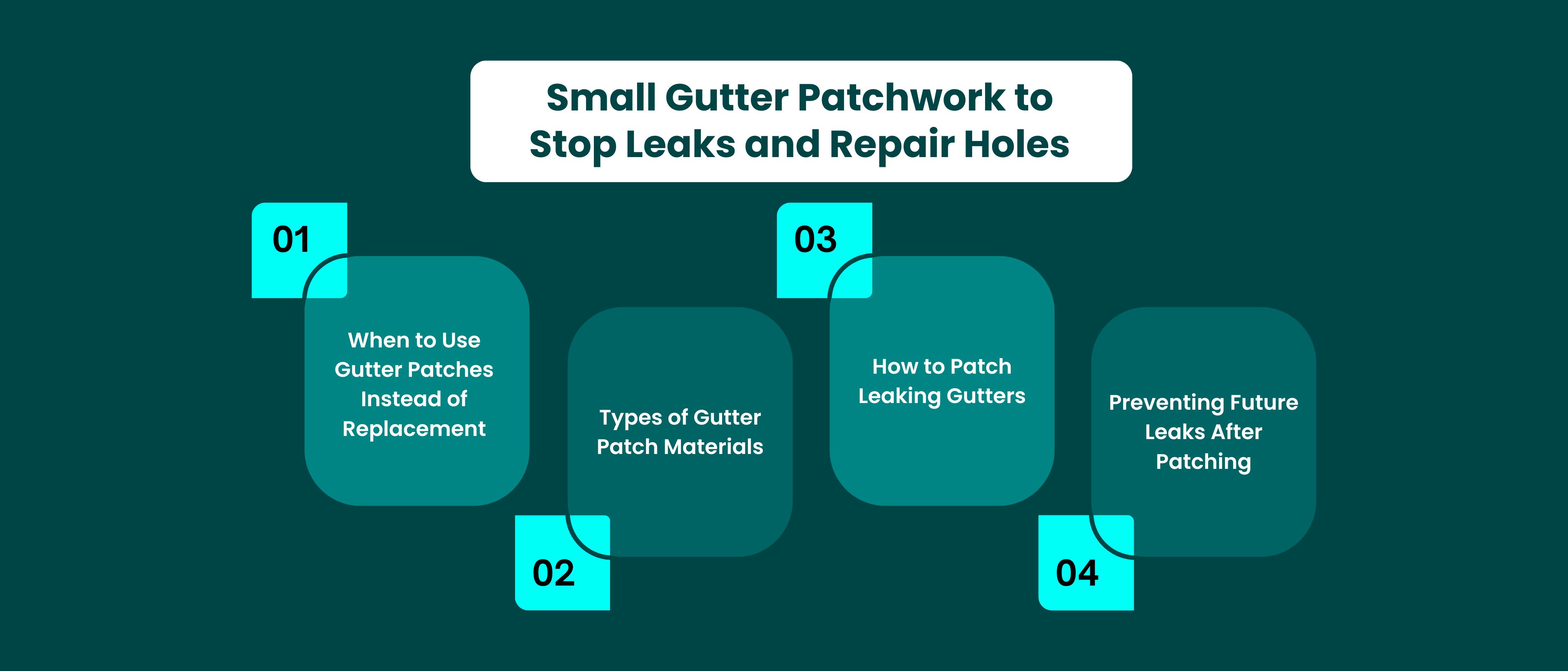
Table of Contents
When to Use Gutter Patches Instead of Replacement
Types of Gutter Patch Materials
Patching for Gutter Downspouts and Pipes
DIY Patch Kits, Tapes, and Sprays
How to Patch Leaking Gutters (DIY Methods)
Quick Comparison: DIY or Pro for Gutter Patches
Preventing Future Leaks After Patching
Gutter Patch Material vs Durability
Sometimes a full gutter replacement isn’t needed. You don’t have to replace the entire system because of a small hole or minor damage. Gutter patching is one solution for small leaks, especially when the damage is not major. Here’s when patching works best:
Tiny cracks, rust spots, or minor holes can be patched quickly. Applying a small gutter patch stops leaks immediately, preventing water from spilling onto your walls, foundation, or landscaping. This simple fix saves you time and avoids unnecessary work replacing the entire gutter.
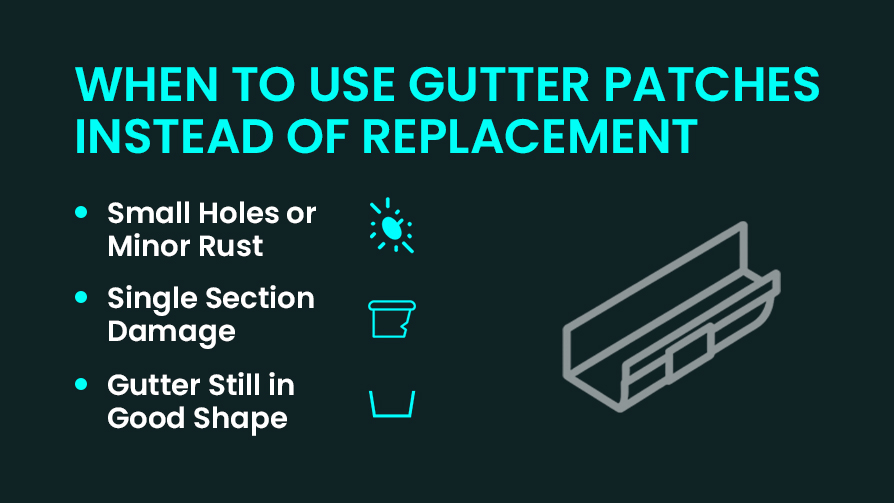
If just one part of your gutter system is affected, patching that section is often enough. You don’t need to replace a full gutter. This approach saves money and allows the rest of your gutter to continue channeling water properly without interruption.
When your gutters are not bent, heavily rusted, or cracked beyond a small hole, a patch can restore proper function. The water will flow correctly, leaks will stop, and the remaining gutter sections will continue working efficiently for years, keeping your home safe from water damage.
Patching is faster, more affordable, and lets you fix leaks before they cause bigger problems like foundation issues, basement leaks, or damage to your landscaping. It’s a smart way to maintain your gutters without spending unnecessarily.
Choosing the right patch material is important for making sure your repair lasts and keeps water flowing properly. Different materials work better for different types of gutters, so here’s a breakdown:
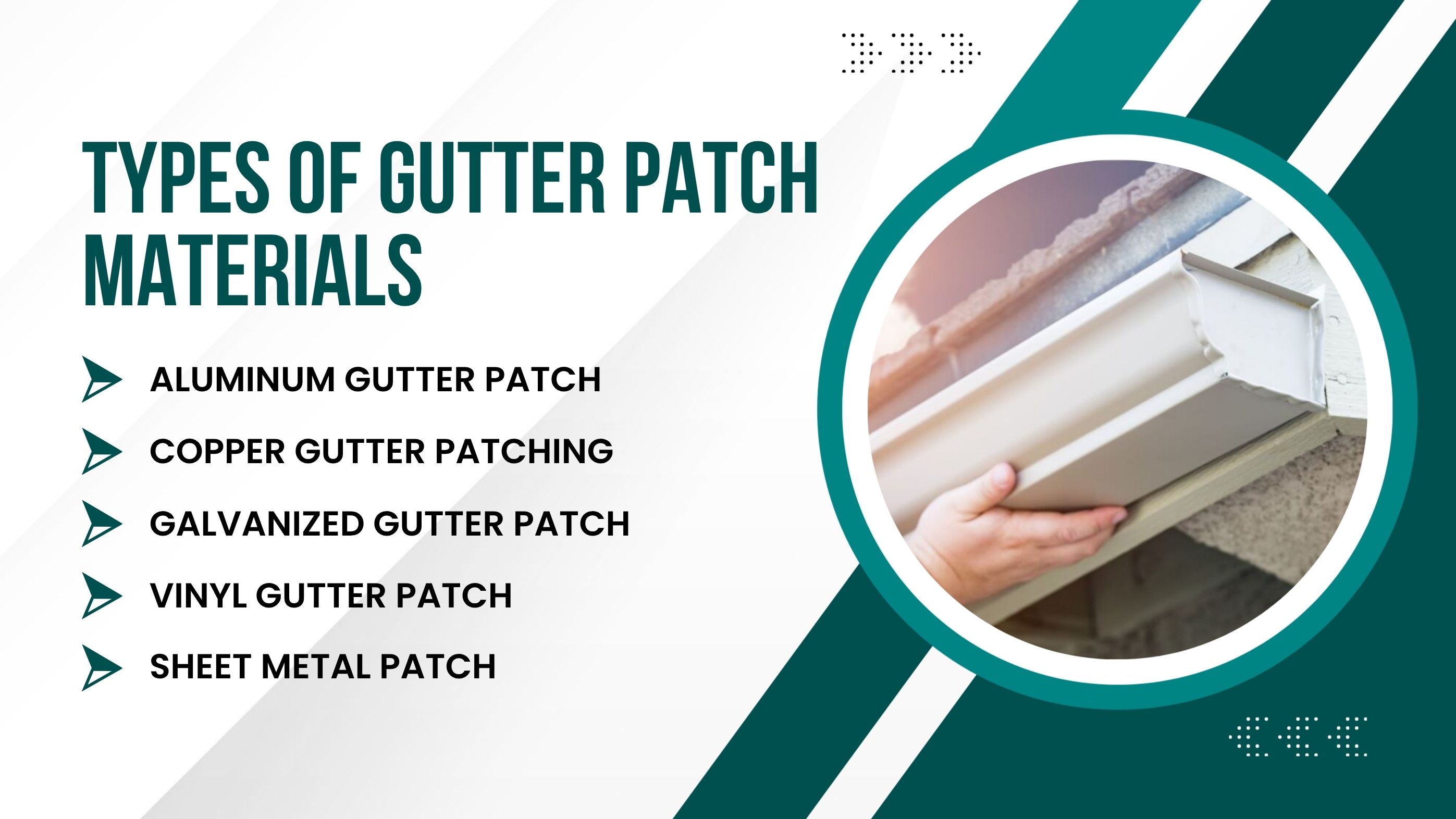
Downspouts and pipes often face extra wear because they carry water away from the roof. Leaks or holes in these areas can cause water to spill near the foundation, leading to soil erosion or basement dampness. Here’s how to handle them:
Downspouts can develop tiny holes or dents over time. These spots can be patched with downspout patch kits or small pieces of sheet metal, stopping leaks quickly and keeping water flowing to the yard.
For holes in the side of a downspout, cut a piece of metal slightly bigger than the opening, apply a strong adhesive or sealant, and press it in place. This helps prevent water from escaping at the joints.
Pipes that carry water underground may need flexible patch materials to handle soil movement or pressure. In some cases, professional help is best to prevent leaks or pipe damage.
Our professional contractors are just a click away.
DIY patch kits are a fast and easy solution for small gutter holes or leaks. They allow homeowners to make repairs without calling a professional, saving both time and money. Here’s a closer look at the options you can use:
Fixing a small leak in your gutter doesn’t have to be complicated. By following a few careful steps, you can stop leaks and protect your home. Here’s how to do it:
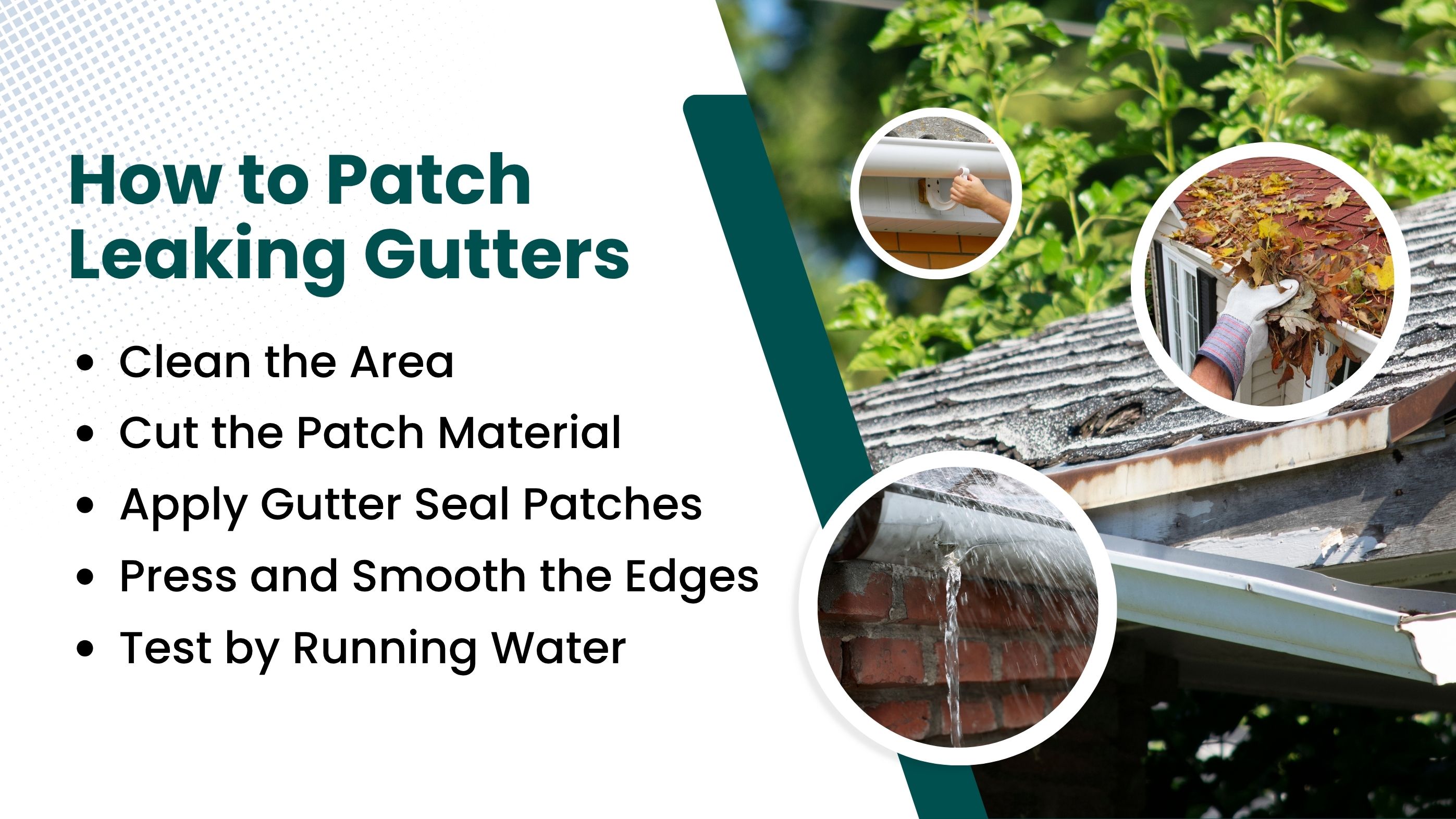
Fixing a gutter patch yourself is cheap and gives you hands-on experience, but it can be risky for high or tricky gutters. Hiring a professional costs more but is safer, faster, and usually lasts longer. Here’s a quick comparison of DIY versus professional gutter patch repair:
Make Gutter Cleaning More Affordable
| Type of System | Key Features | Best for |
|---|---|---|
| No Clog Gutter System | Keeps debris out while letting water flow freely major work | New gutter installations or full replacement existing gutters |
| Clog-Free System | Can be added to the current gutters without | Homeowners who want an upgrade to their |
Patching a gutter stops leaks temporarily, but without proper care, the problem can come back. Regular checks and maintenance help your repairs last longer and keep water flowing safely away from your home. Here’s how to prevent future leaks:
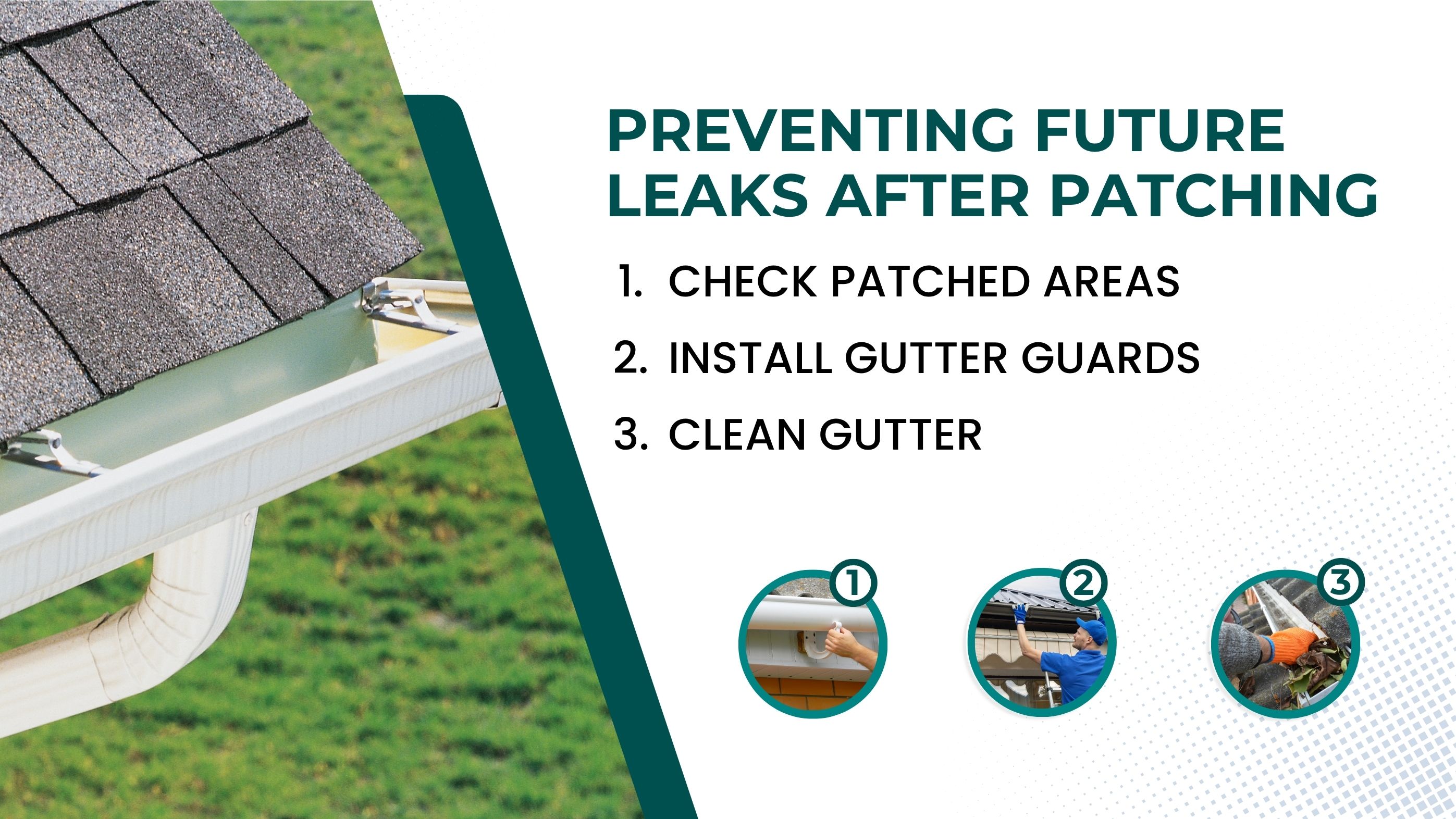
Choosing the right material for a gutter patch is key to making your repair last. Different materials last for different lengths of time and handle water, weather, and wear in unique ways. Understanding the durability of each type helps you pick the best patch to keep your gutters working smoothly for years.
Small gutter holes may seem minor, but they can quickly lead to leaks, foundation damage, or costly water repairs. Using a small gutter patch, whether DIY or professional, can stop leaks fast and protect your home. Choose the right material, use proper tools, and check patches regularly to keep your gutters working smoothly. Preventing clogs and leaks now saves time, money, and headaches later.
A well-applied gutter patch can last 1–5 years depending on the material, weather conditions, and regular maintenance. Metal patches and sealant-backed products last longer than quick tape or spray fixes.
Yes, but results are less reliable. Adhesives and tapes don’t bond well in freezing temperatures or on wet surfaces. For winter fixes, heating the area or using cold-weather sealants is essential.
Yes, but only certain products. Vinyl gutters require flexible patches or sealants designed for plastic surfaces. Using metal-based patches on vinyl often causes cracking or leaks.
Temporary patches won’t hurt resale if gutters function properly, but multiple patches may signal poor upkeep. Buyers prefer professionally repaired or replaced gutters for long-term value.
No. Ice dams put pressure on gutters and cause structural issues. Patches can cover holes but won’t prevent new damage if the root cause (ice buildup) isn’t fixed.
Spray patches provide a quick seal for pinholes or seams but wear faster under heavy rain and sun exposure. Solid patches or adhesive-backed strips are more durable.
Join our mailing list for exclusive updates, expert tips, and special offers tailored to your needs. Be the first to know about the latest in home services.


Renovize Home is a platform that supports homeowners from planning to renovation. Whether it’s Renovize AI for guidance or a one-on-one call with Pro Finder, we understand your project and match you with local contractors tailored to your needs.
Who We Are
About Renovize HomeGet in TouchHomeownwer Support:
Coming Soon!
General Inquiries:
support@renovizehome.com
Head Office:
24 Greenway Plaza, STE 1800M, Houston, TX 77046.